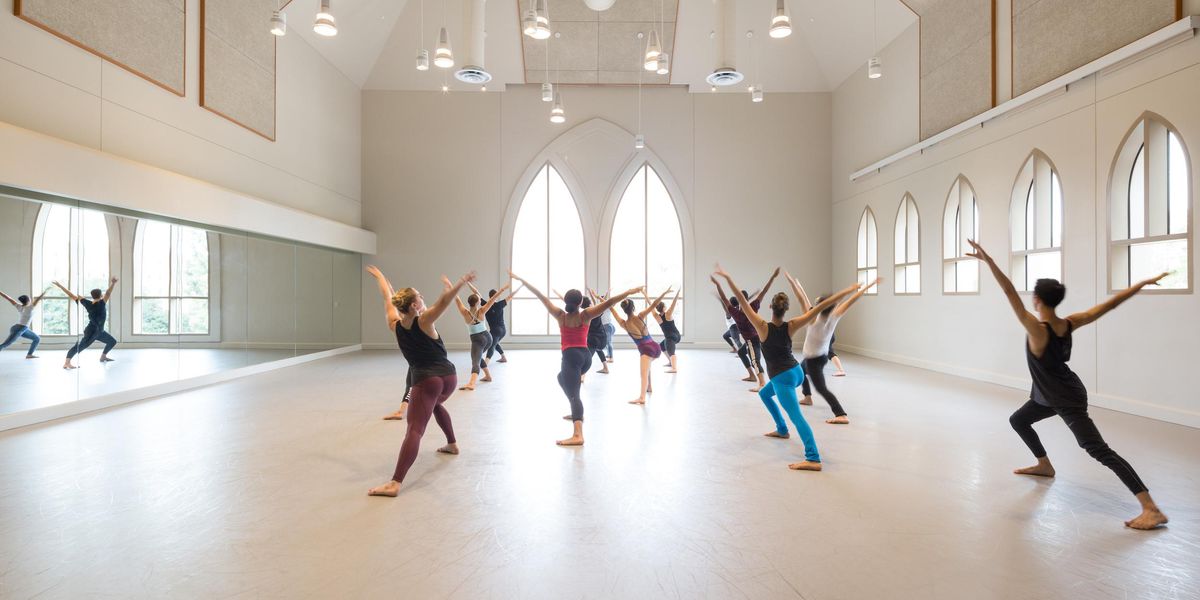Pilobolus Dance Theatre
Joyce Theater
New York, NY
Programs A and B
July 16–August 11
When Pilobolus Dance Theater was founded in 1971, it introduced a new paradigm in contemporary dance.
The founders, a group of brilliant Dartmouth students and their dance teacher, Alison Chase, shared a sense of intellectual curiosity that extended to bio-physics and literature. They embodied the values of a free-wheeling age; and their unselfconscious performances combined nudity, alternative rock, and mysticism. These young dancers were communal, acrobatic, and not too snooty to reach for a cheap laugh. Cheerfully they clambered up a human pyramid to fame.
Does it seem strange that in those innocent days our best and brightest were more interested in chucking their clothes and experimenting with movement, than they were in bringing the next gazillion-dollar IPO to market? Pilobolus, like Facebook, was a fantasy concocted on a college campus, but there was nothing “virtual” or acquisitive about its inventors’ hands-on approach.
Fast-forward to 2012. Pilobolus is successful—maybe too successful—but only one of the original group, Robby Barnett, remains in charge along with Michael Tracy, a later Dartmouth grad. The others quarreled and left, or died. Since each founder owned a piece of the original recipe, these departures have diluted the company’s vision. With an influx of new dancers, and ongoing collaborations with a diverse group of international choreographers and other artists, today’s company little resembles its earlier self. The newcomers are no substitute for the ones who have gone.
Jun Kuribayashi and Shawn Fitzgerald Ahern in Trish Sie’s
Skyscrapers.
Photo by Grant Halverson, courtesy Pilobolus.
Most distressingly, the playfulness and engaging theatricality that distressed old-school moderns has now become a fawning commercialism. Pilobolus, the brand, has supplanted Pilobolus the dance company. They’re as proud of their Hyundai television spot and of their promotional materials as they are of their stage works.
Pilobolus’ most consistent direction, in recent seasons, has been toward flat-screen images—from the shadow-play of The Transformation through monomaniacal cartoonist Art Spiegelman’s Hapless Hooligan and onward to last season’s All Is Not Lost, by Trish Sie, in which the cast performs on a glass table while a camera records their movements from below. The shallow concept for this season’s Skyscrapers—with tango couples changing colors as they whirl across a frame—was, once again, borrowed from Sie’s latest music video for the indie rock band OK Go, featuring Pilobolus dancers.
Azimuth, a collaboration between Pilobolus and Michael Moschen.
Photo by Grant Halverson, courtesy Pilobolus.
Short films interlard the dances on both of their current programs at the Joyce. This fare is enchanting, documenting the patterns made by flights of starlings, for instance, and a bicyclist’s high-speed journey through a city. Yet this way of linking dances with films suggests an attempt to copy the rhythm of stadium-sized entertainments like the touring version of So You Think You Can Dance, with its breaks for Slim-Fast endorsements and dancer interviews that “friend” us. Fortunately Pilobolus hasn’t yet mastered these road-show techniques. Its screens are too small, and the transitions look awkward.
Bereft of its original perspectives, the company must rely upon the imagination and the integrity of its collaborators. Sidi Larbi Cherkaoui’s Automaton has little to recommend it, certainly not the speed and quirky, gestural vocabulary of Cherkaoui’s own work. Here the dancers play stiff-armed robots, lumbering and rusty and yearning for erotic release. The vocabulary and the nudity are trite. Despite the presence of a giant hanging mirror that turns the stage inside out, and three mirrored screens that enclose a liminal space where anything might happen, Automaton lacks clarity and direction. How odd that Pilobolus doesn’t know what to do with a Stargate.
Sidi Larbi Cherkaoui’s
Automaton.
Photo by Oriel Pe’er, courtesy Pilobolus.
Azimuth
, a collaboration with juggler Michael Moschen, is much sparer, relying upon our natural fascination for watching objects in transit. The props include colored balls, rings, and curved aluminum wands, and the purpose of the dancing is to give them life. Pilobolus is at its best creating mysterious orifices and tunnels, and Azimuth recaptures some of the troupe’s old hocus-pocus, inviting the audience to meet the creators half-way.
Still, apart from revivals of Pseudopodia, Gnomen and Duet, which are wonderfully danced and recall better days, the highlight of the current season is last year’s Korokoro. That’s because guest choreographer Takuya Muramatsu finds the dancers’ bodies interesting. He even cares about their feet. Sure, the piece contains some corny gags—like the woman who deflates. Yet Korokoro draws its substance from the dancers’ physicality, eerily hunched and twisted, and from the curious expression with which they gaze at us peering from a wall of human faces. The absurdist misery of Butoh is too disquieting, its humor too double-edged for commercial purposes.
Korokoro
has the resonance other, recent pieces lack. By returning to the body, Pilobolus finds a new way of being itself.
Pictured at top:
Azimuth. Photo by Grant Halverson, courtesy Pilobolus.




